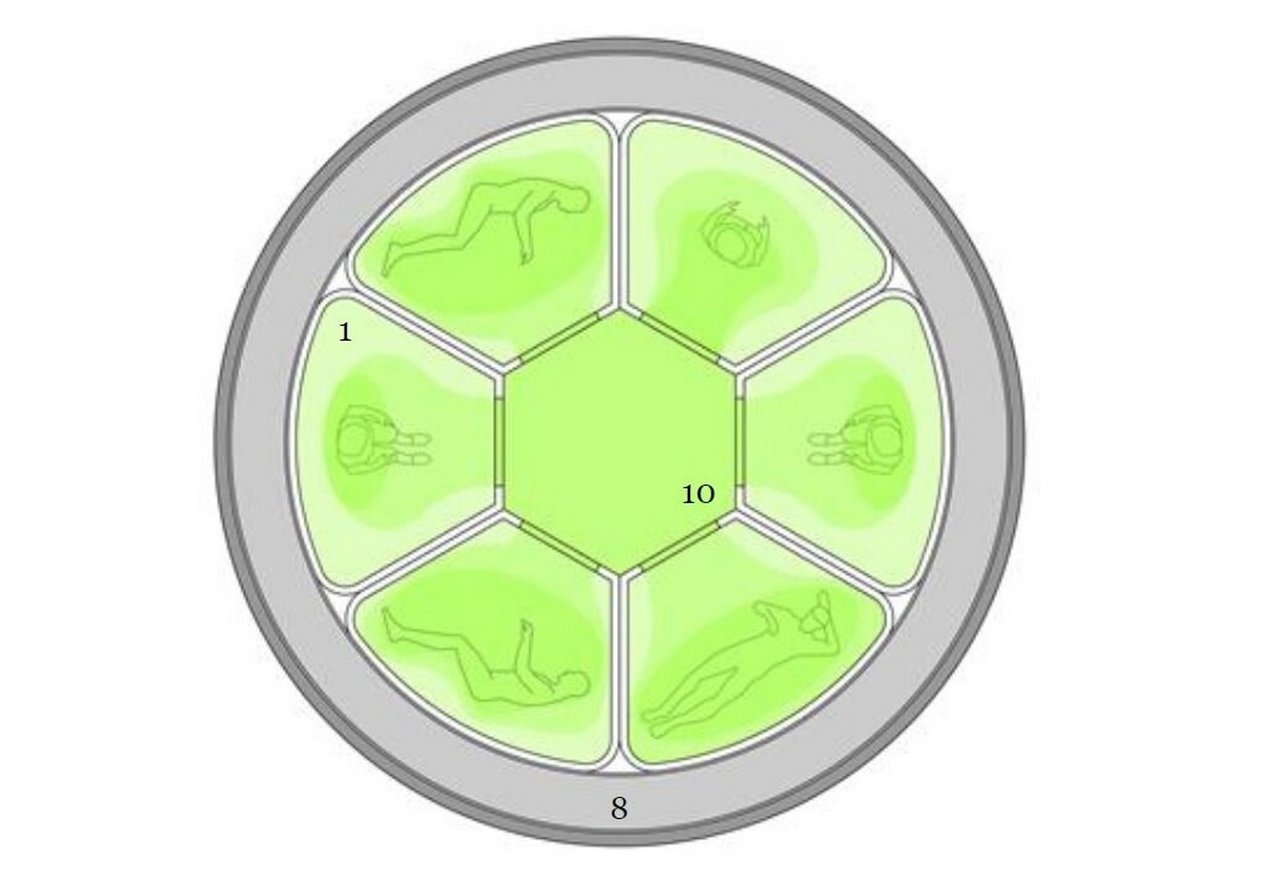The European Space Agency wants to explore concepts to put future astronauts in a state of ‘suspended animation’ — in a method fairly similar to hibernation in polar-bears — to venture to our solar system’s outer planets and possible deep space, someday. A team of scientists from ESA, the Ludwig-Maximilian University of Munich and the University of Goethe—Frankfurt have been exploring a prospective mission that would send six astronauts to Mars and back over the span of five years. The team looked at various variables that would make up a mission — the spacecraft, a viable energy source and a battery backup system that is failproof over the multi-year mission, level of radiation they would be exposed to, among others. [caption id=“attachment_7677411” align=“alignnone” width=“1280”] An astronaut floats in space.[/caption] At the end of their research, they produced a mission concept. In the mission, the astronauts will be administered a drug that induces a state of hibernation called ’torpor’. Not unlike polar bears, the astronauts will need to pile on the fat before they are put into what’s in effect an induced coma. Each astronaut will be isolated in individual sleep pods that will double as cabins when they are awake. The pods will be darkened and the temperature decreased considerably. Hibernation during space travel brings down the overall weight of the spacecraft by nearly a third and also saves space (pun not intended) in space-food shelves onboard. The Earth-to-Mars trip will last 180 days, with the hibernation period ending in a 21-day-long period of ‘recuperation’. [caption id=“attachment_7677331” align=“alignnone” width=“1280”]
 The hibernating pod for the astronauts. Image credit: NASA[/caption] “We worked on adjusting the architecture of the spacecraft, its logistics, protection against radiation, power consumption and overall mission design,” Robin Biesbroek of the Concurrent Design Facility said in a statement. “We looked at how an astronaut team could be best put into hibernation, what to do in case of emergencies, how to handle human safety and even what impact hibernation would have on the psychology of the team. Finally we created an initial sketch of the habitat architecture and created a roadmap to achieve a validated approach to hibernate humans to Mars within 20 years.” With space travel and an ambition to explore deep space comes a serious risk of exposure to radiation from space and the Sun. The team proposed that radiation shielding be focussed on only those containers that astronauts will be spending the bulk of their journey in — their pods. The entire 5-year trip will lean heavily on artificial intelligence and the flight will be autonomous — eerily similar to the Hollywood sci-fi movie Passengers (2016). [caption id=“attachment_7677341” align=“alignnone” width=“1280”]
The hibernating pod for the astronauts. Image credit: NASA[/caption] “We worked on adjusting the architecture of the spacecraft, its logistics, protection against radiation, power consumption and overall mission design,” Robin Biesbroek of the Concurrent Design Facility said in a statement. “We looked at how an astronaut team could be best put into hibernation, what to do in case of emergencies, how to handle human safety and even what impact hibernation would have on the psychology of the team. Finally we created an initial sketch of the habitat architecture and created a roadmap to achieve a validated approach to hibernate humans to Mars within 20 years.” With space travel and an ambition to explore deep space comes a serious risk of exposure to radiation from space and the Sun. The team proposed that radiation shielding be focussed on only those containers that astronauts will be spending the bulk of their journey in — their pods. The entire 5-year trip will lean heavily on artificial intelligence and the flight will be autonomous — eerily similar to the Hollywood sci-fi movie Passengers (2016). [caption id=“attachment_7677341” align=“alignnone” width=“1280”] The standard habitation module as compared to the special hibernation module. Image credit: ESA[/caption] “For a while now, hibernation has been proposed as a game-changing tool for human space travel,” explains SciSpacE Team Leader Jennifer Ngo-Anh
in the press release. “If we were able to reduce an astronaut’s basic metabolic rate by 75 percent – similar to what we can observe in nature with large hibernating animals such as certain bears – we could end up with substantial mass and cost savings, making long-duration exploration missions more feasible.” [caption id=“attachment_7677301” align=“alignnone” width=“756”]
The Hibernation and Torpor study logo. Image credit: ESA[/caption] “And the basic idea of putting astronauts into long-duration hibernation is actually not so crazy: a broadly comparable method has been tested and applied as therapy in critical care trauma patients and those due to undergo major surgeries for more than two decades. Most major medical centers have protocols for inducing hypothermia in patients to reduce their metabolism to basically gain time, keeping patients in better shape than they otherwise would be.” As for someone waking up mid-snooze, journeys that’ll take much longer than 180 days, weird age dynamics with family as astronauts age (slower than the rest of us on Earth) or is there a possibility for them to pause their growth? ? Will it have any long term effects on them? I guess we will have to wait and find out.
Researchers are exploring new ways to lower the metabolic rate of astronauts by 75%, similar to some large hibernating animals like bears.
Advertisement
End of Article


)
)
)
)
)
)
)
)
)



